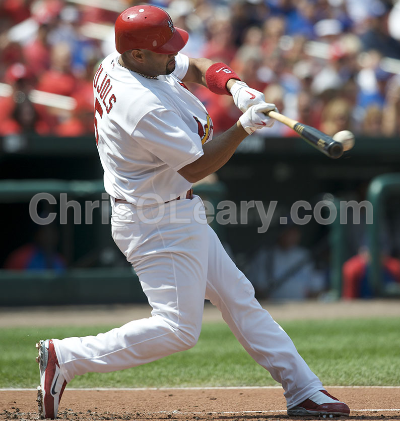 Hitting can be complicated, with any number of cues that simply MUST be followed or else...
Hitting can be complicated, with any number of cues that simply MUST be followed or else...
- Get your back elbow up.
- Get the barrel straight up and down.
But it doesn't have to be.
Especially when a hitter is just starting out.
Yes, telling a hitter to get their back elbow up is one thing that can help them if they are trying to develop their power.
But what if they're just trying to learn to make contact?
The problem is, if a hitter is just starting off, telling them to get their back elbow up or the barrel straight up and down is just as likely to break their swing as it is to fix it.
And that's the problem with hitting and hitting instruction.
And what I aim to solve.
My goal with this hitting primer -- as with my pitching primer and all my more advanced instructional materials -- is to provide coaches and parents with a proven, logical program that draws upon my experience coaching kids of all ages and that helps them understand...
- What to teach
- When.
- In what order.
And that, first and foremost, ensures that kids have the best chance of learning to JUST HIT THE BALL.
Chris O'Leary's Hitting Primer
While I've spent the past few years mainly working with college, Minor League, and Major League hitters, I've started helping my brothers coach my nephews as they've started getting older.
As a result, I've spent a lot of time thinking about how to introduce kids, parents, and coaches to hitting.
Chris O'Leary's 1-Phrase Hitting Clinic
If you asked me to give a hitting clinic, but only let me use one phrase, that phrase would be this.
Trust, but verify.
When I was coming of age in the late 1970s and early 1980s, my dad bought Charley Lau's The Art of Hitting .300 in an attempt to help me with my hitting.
His assumption was that the information was good and could be trusted, since it came from a major league hitting coach. As a result, I chalked my lack of improvement, and further decline, up to my inability to do what great hitters actually do.

George Brett Demonstrating Extension at the Point Of Contact
It wasn't until 30 years later that I realized that the true problem was that what I was taught wasn't what the best hitters did.
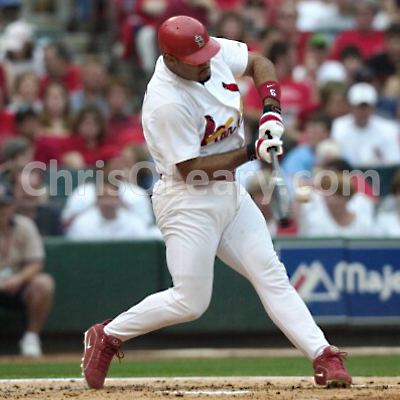
Albert Pujols 2004
I found that, if I wanted to teach my sons better, I'd have to study the best hitters.
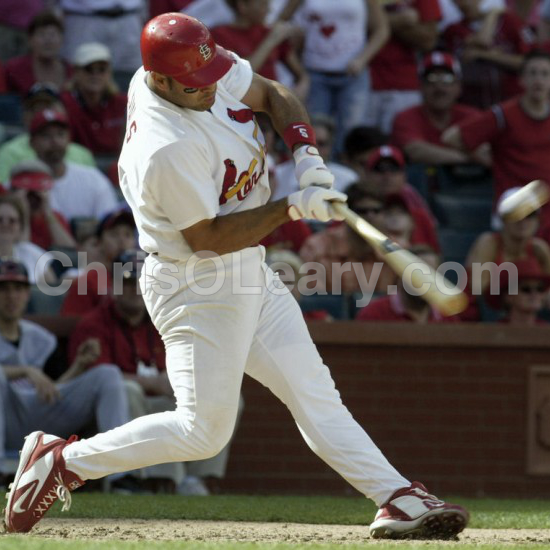
Albert Pujols 2006
That was easy, given that I live in St. Louis and I started my process of studying right as it was becoming clear that Albert Pujols was a special talent.

Albert Pujols 2005
The lesson I learned the hard way -- by having my swing ruined -- is one you MUST take to heart. If you want the best for your hitter(s), you must approach everything you hear with a healthy skepticism and verify it. Fortunately, that's much easier to do than it was when I was a kid, and is even easier than when I first started studying hitting in 2004 or so.
Chris O'Leary's 1-Picture Hitting Clinic
While you CAN over-simplify a swing, that's now a problem when a hitter is just starting out.
And just trying to learn to make contact.
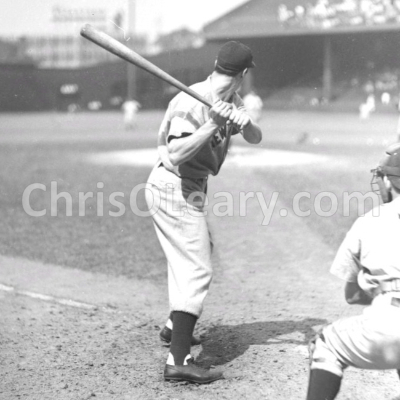
Joe DiMaggio
I don't think it's a coincidence that Joe DiMaggio, one of the greatest contact hitters of all time, employed a VERY simple stance and set-up.
One that violated the conventional wisdom, which says.
- Get your back elbow up.
- Get the barrel straight up and down.
The advantage of starting out how Joe DiMaggio did is that, by doing so...
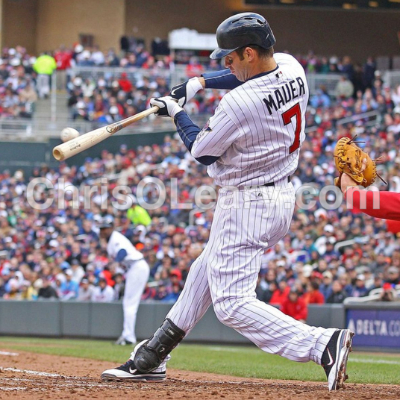
Joe Mauer
...all a hitter has to do to swing is to JUST TURN.
That's it.
Chris O'Leary's 1-Concept Hitting Clinic
If you asked me to give a hitting clinic, but only let me use one phrase, that concept would be Rotation.

Joe DiMaggio
If you get the set-up right, then hitting becomes merely a matter of Rotatiing.

Joe Mauer
Chris O'Leary's 1-Sequence Hitting Clinic
Chris O'Leary's 1-Clip Hitting Clinic
Too many kids, parents, and coaches get caught up in what is style, not substance.
In my experience, that very often starts with the position of the bat.
Too many people want the barrel UP, when that is very often counter-productive.
They'll justify their desires based on what they see big-leaguers do, without understanding the entirety of that movement.
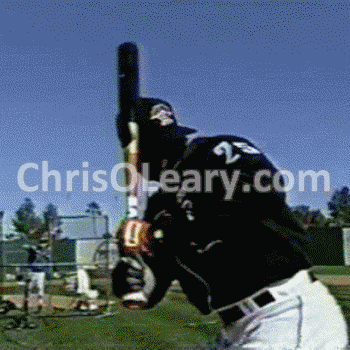
Barry Bonds
While Barry Bonds DID start with his barrel vertical and UP, the thing that most people miss is that he got his barrel FLAT as he started to Rotate.
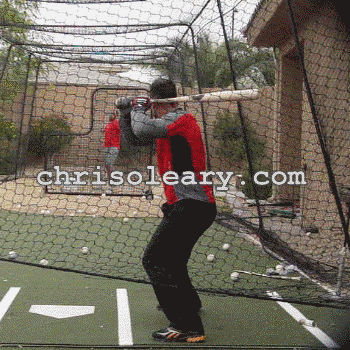
Andres Torres
I DO teach this movement, but only...
- To my higher-level clients.
- When they are having a problem with Warning Track Power.
- When In-Plane-Loading doesn't work for them.
However,this is a very sophisticated and subtle movement and it's often too much for a kid to master, especially when they are just learning to make consistent contact with the ball.
Chris O'Leary's 1-Word Hitting Clinic
If you asked me to give a hitting clinic, but only let me say one word, that word would be this one.
Tee.
While some put down batting tees, and even go so far as to say they should never be used, I use batting tees with my college and professional clients because they are the best, and sometimes the only, way to work on certain concepts.
In terms of youth baseball, the value of a good batting tee was driven home to me on vacation one year. I was staying with my brother and some friends, and they saw me working with my nephew and asked if I could take a look at their son's swing. I set him up at the tee and, after tweaking his stance and how he held the bat, just let him swing the bat. After a few swings, his father exclaimed, "Those are the best swings he's ever taken. Ever."
The fact is that, when their kids are just starting out, too many people spend their money on a good bat when they should be spending their money on a good batting tee (and then a good helmet).
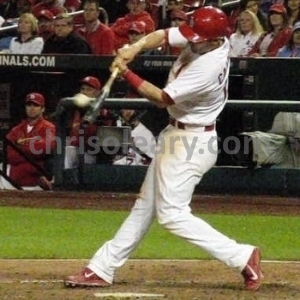
Matt Carpenter
The biggest point of confusion about the batting tee is where to place it. While I do like to place the tee deeper father back in the stance when working with my college hitters, when working with kids I like the tee to be around the middle of the front foot, as you see in the picture above of Matt Carpenter hitting a home run.
For my money, the best batting tees are Tanner Tees.
Chris O'Leary's 1-Drill Hitting Clinic
If you asked me to give a hitting clinic, but only let me talk about one drill, that drill would be one that's based on Carlos Beltran's double-step.
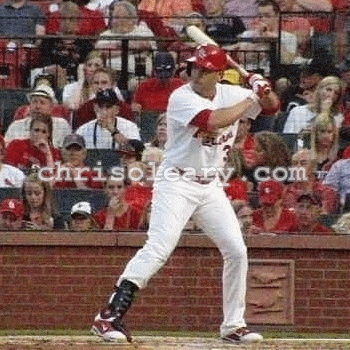
Carlos Beltran's Double-Step
Since I'm encouraging you to buy and use a Tanner Tee, I need to teach you how to use it correctly.
In my experience with hundreds of kids and other new hitters, I have found that when they step up to a tee, they tend to set up wrong; they set up...
- Too far off the plate (toward the dugout behind them)
- Too far forward (toward the pitcher).
Which may explain why some people don't like batting tees.
I like to teach people how to set up using Carlos Beltran as an example because his double-step -- the way he steps back toward the catcher before stepping forward toward the pitcher -- makes it easy for the hitter to locate correctly relative to the tee.
Starting from foot plant and contact, you want the tee to be located at the toe of the front foot or a bit back toward the catcher. Since the forward step toward the pitcher will tend to be longer than the step back toward the catcher, the toe of the step foot should start at or a bit behind the tee.
- The back-step should be roughly 1 shoe length.
- The forward-step should be roughly 1.5 to 2 shoe lengths.
Since the back-step should end up with the feet roughly shoulder width apart, for balance, that means that the back foot should be roughly a shoulder width plus two steps from the back edge of the back foot.
In terms of how far back toward the dugout the hitter should stand, most hitters set up too far off the plate so they can hit the ball at full extension. The problem is, while that may work for little kids, it won't work against live pitching for long.
A hitter wants to set up close enough to the plate that...
- They can still hit a pitch on the outer third of the plate
- Off of the outer third of the sweet spot of the bat
- While still maintaining the Power L.
You will notice that I didn't say anything about the plate.
That is because the point of contact, and thus the placement of the tee, should be based on the position of the body, not the plate.
Where to Go from Here
I have put together a number of other pieces, including my FREE 10-Minute Pitching Clinic.
If you really want to dig into the nitty-gritty of hitty, but in a way that, like this piece, makes it easy to understand, you should consider becoming a client.